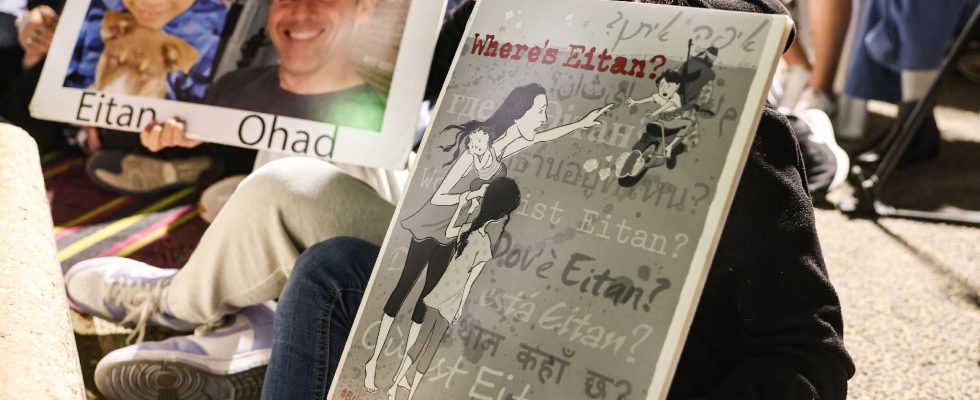After long and bitter negotiations carried out under the aegis of Qatar, which established itself as mediator between Israel and Hamas, the agreement for a four-day truce and the release of hostages will finally come into force this Friday 14 November, from 7 a.m. (6 a.m. Paris time). L’Express answers four questions about this agreement.
How many Israeli hostages will be freed?
During this four-day truce, a total of 50 Israeli hostages will be released by Hamas. This Friday, “a first group of civilian hostages will be released around 4 p.m. (3 p.m. Paris time),” announced the spokesperson for the Qatari Ministry of Foreign Affairs, Majed Al-Ansari. This corresponds to 13 women and children, members of the same families.
The office of Israeli Prime Minister Benjamin Netanyahu said it had a “first list of names” of hostages and was in contact with their families. According to former Israeli general Gal Hirsch, in charge of relations with the families of the hostages, messages were sent “to all the families whose relatives appear on the list, as well as to all the families of those kidnapped.”
The spokesperson for the Qatari Ministry of Foreign Affairs had already clarified that the agreement does not include the release of Israeli soldiers.
What are the terms of their release?
How to hand over the hostages held in Gaza to Israel? This is one of the salient points which pushed back the entry into force of the agreement to Friday, when it was initially planned for Thursday.
The hostages should be “handed over via the Red Cross to take them to Egypt”, bordering the Gaza Strip, before being entrusted “to the Israeli side”, a source close to the negotiations explained to AFP.
This official also added that it was “proposed that a medical visit by Red Cross executives first take place to ensure the state of health of the hostages” and then a visit by the Red Cross to the other civilian hostages “so that they can ensure their state of health”.
According to Radio Francethe families of the hostages will only know of the release of their loved ones once they arrive on Israeli soil, and not before.
Who are the 150 Palestinian prisoners released in exchange?
The condition set by Hamas in the agreement with Israel was to obtain, in return for the release of each Israeli hostage, the release of “three Palestinian prisoners, women and children”, indicated the armed wing of Hamas, the Brigades Ezzedine al-Qassam.
Israel will therefore release 150 women and young people under the age of 19 during the truce. The Jewish state has released a first list of 300 prisoners likely to be released in phases: 33 women, 123 adolescents under the age of 18 and 144 young people around 18 years old.
Among these detainees, again according to Israel, we find 49 members of Hamas, 28 of Islamic Jihad, 60 of the Fatah movement of Palestinian President Mahmoud Abbas and 17 of the Popular Front for the Liberation of Palestine (PFLP, Marxist nationalist).
“We set the condition that […] “Palestinian women and children prisoners” held in Israeli prisons be released “in order of seniority”, declared Bassem Naïm, a senior Hamas executive. Thus, those who have been in prison for the longest will be released first, according to him.
How will the truce be organized?
In addition to the release of the hostages, the agreement signed between Israel and Hamas also provides for a “humanitarian pause” of “four days, with the possibility of extension”, Qatar announced. Throughout the truce, Israel must ensure the freedom of movement of people, Hamas demanded.
This truce also includes “a complete cessation of military activities”, the armed wing of Hamas announced this Thursday. The agreement finally provides that the Israeli air force will stop flying over the south of the Gaza Strip for four days, and the north for six hours each day, and that an increasing number of humanitarian convoys and fuel deliveries enter into the besieged territory.
The spokesperson for the Qatari Ministry of Foreign Affairs, Majed Al-Ansari, hoped that the temporary cessation of fighting would make it possible to “collect information” on the other hostages “to consider the possibility of further releases and thus extend the pause” .
